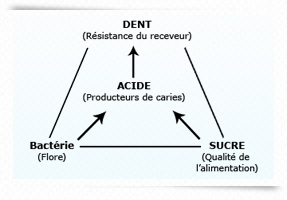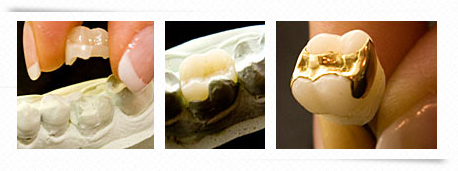Care & services offered at the CDMD dental center
GENERAL DENTISTRY
Extensive assessment procedures
 Dental caries is an infectious disease transmitted by saliva, the appearance of which is due to a high rate of bacterial contamination. The “streptococcus mutans” SM (streptococcus) and then the “lactobacillus” LB (lactobacillus) are the two bacteria that are the source of dental caries. These bacteria use refined sugars to produce an acid that destroys tooth enamel and the dentin under the enamel (the outer and inner layers of the teeth).
Dental caries is an infectious disease transmitted by saliva, the appearance of which is due to a high rate of bacterial contamination. The “streptococcus mutans” SM (streptococcus) and then the “lactobacillus” LB (lactobacillus) are the two bacteria that are the source of dental caries. These bacteria use refined sugars to produce an acid that destroys tooth enamel and the dentin under the enamel (the outer and inner layers of the teeth).
 In general, this process only makes the decayed tooth sensitive when it reaches the deeper layers of dentin and approaches the pulp or nerve of the tooth. At this stage of the infection, root canal treatment may be necessary.
In general, this process only makes the decayed tooth sensitive when it reaches the deeper layers of dentin and approaches the pulp or nerve of the tooth. At this stage of the infection, root canal treatment may be necessary.
 Our goal is to reduce the number of harmful bacteria, by modifying the diet to reduce the number of foods that promote acid production, in order to prevent the emergence of dental caries.
Our goal is to reduce the number of harmful bacteria, by modifying the diet to reduce the number of foods that promote acid production, in order to prevent the emergence of dental caries.
Caution: This disease is transmissible to children through saliva; therefore, avoid using for the child utensils that have been put in his mouth.
Kinds of caries
The first kind of caries is called occlusal since it is embedded in the chewing surfaces. It appears where there are pits (holes) and natural occlusal fissures.
The second kind is on the smooth surfaces of the enamel, on the sides of the teeth and between them, surfaces that the toothbrush and dental floss can reach.
The third kind is located on the root. It can set in when the teeth loosen and thus a more fragile part is exposed.
Risk factors
- High rate of presence of streptococci
- Dry mouth (xerostomia), saliva quality and “pH” level
- Diet using refined sugars and refined starches
- Presence of pits (holes), furrows and microporosities in the enamel
- Enamel morphology and deficiencies (outer layer)
- Stress with distress
Risk factors
We recommend that cavities are removed and that restorations or crowns are used to close and protect the affected tooth.
Tooth restorations are made using biocompatible materials (ie compatible with human biology), either white composites, porcelain or gold inlays.

Sealing of pits and fissures
For pits and fissures, we recommend resin to fill and protect the small cavities that harbor cavities-causing bacteria. This treatment is done without anesthesia.
![]() To help you better understand the procedures in this section, you can watch in the office, using our 3D video presentation system, the treatments offered in detail.
To help you better understand the procedures in this section, you can watch in the office, using our 3D video presentation system, the treatments offered in detail.
